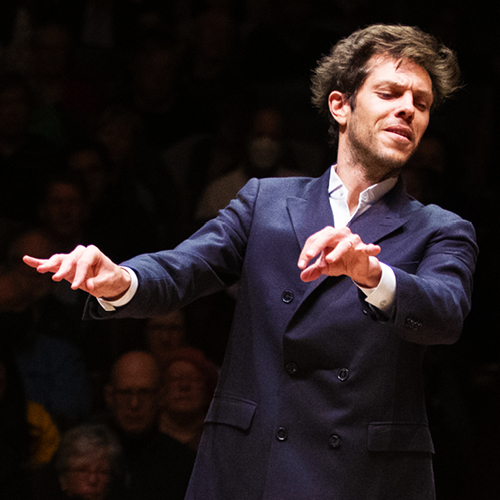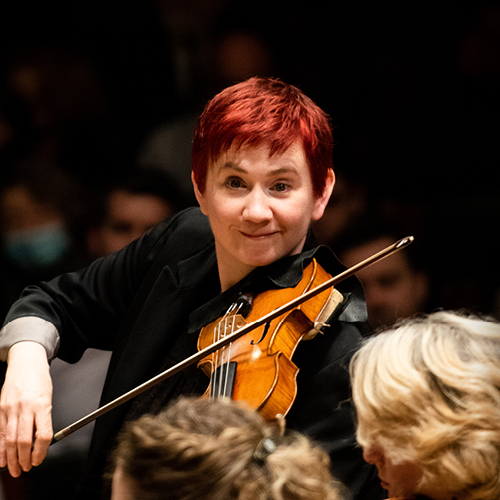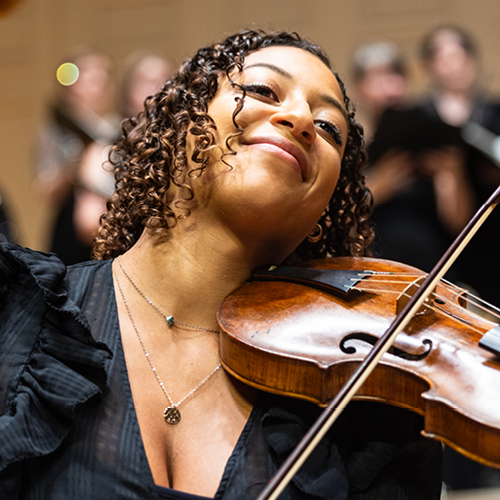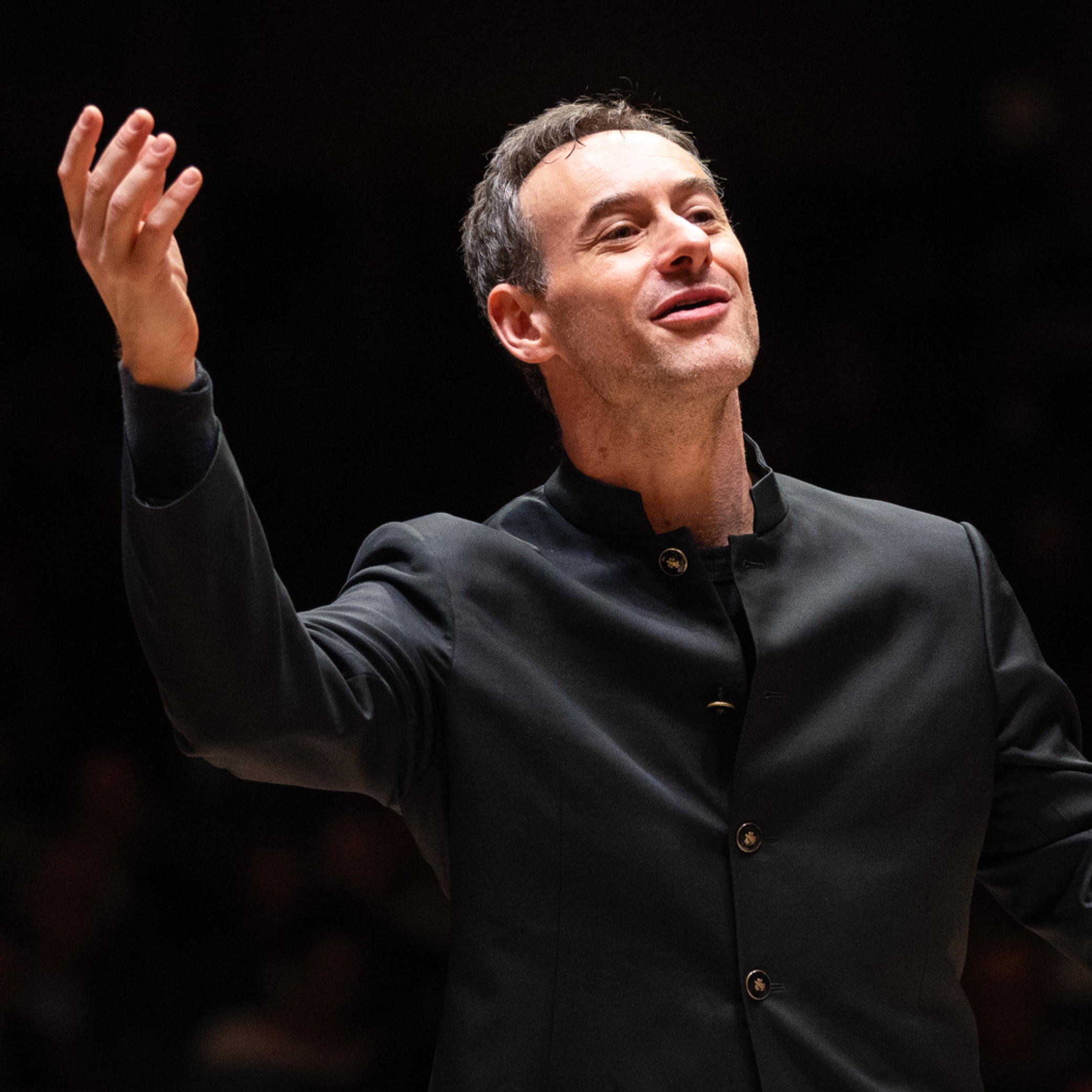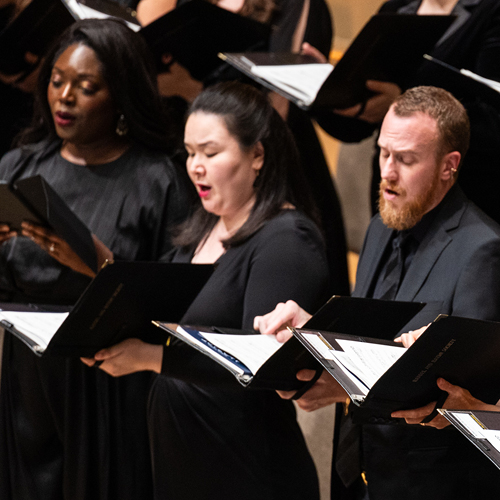This post also appears on the Castle of our Skins BIBA (Beauty in Black Artistry) Blog. Written by Anthony R. Green, Associate Artistic Director, Castle of our Skins.
ARTIST SPOTLIGHT: REGGIE MOBLEY
This blog entry is a guest artist spotlight featuring the esteemed, world-renowned countertenor Reginald Mobley! After starting his classical music career as a member of twice GRAMMY® nominated ensemble Seraphic Fire, Reggie has since appeared with Academy of Ancient Music, Agave Baroque, Bach Collegium San Diego, and The Handel + Haydn Society. With the latter, he had the honor of becoming the first Black person to lead H+H in its Bicentennial year. Recent festival appearances include Bachfest Leipzig, Festival Berlioz, Early Music Vancouver, Thüringer Bachwoche, and the Boston Early Music Festival.
BIBA : How did you come into music and discover your preference for counter-tenor performance?
RM : Hahah. I think by now there’s a common origin story for many Black American countertenors. Blah blah blah… church choir, blah blah blah… gospel. Mine certainly started that way in a small Seventh-day Adventist church in my hometown of Gainesville FL. That almost instinctual understanding and love for music was established there. I stayed interested in music, but it was never my first love. Not until I discovered Bach late in high school. It was a good thing, too. Circumstances (a sudden decision to attend an HBCU) put me in a position where I needed to decline an art scholarship, and I was able to secure a music scholarship that allowed me to study elsewhere. I was in music, but I spent years never really focused until I found myself back at home in FL where my voice teacher at the University of Florida discovered my “real” voice. I honestly had no idea that countertenors existed, and had always assumed that those “mezzos” had strange masculine sounding names like Michael Chance and Andreas Scholl. When I made the switch, my professor told me it was this that I would do for the rest of my life. I’ve spent every day since trying to prove him wrong.
BIBA : What have been your biggest visions for Handel & Haydn since you joined their team, and how have these visions or the planning for these visions unfolded?
RM : It was strange happenstance that found me falling sideways into this role with H+H. Every now and then, it still hits me that this is even something I do. And when I found out I was the first Black person to ever lead the ensemble during the bicentennial year, the imposter syndrome certainly kicked into high gear. I’m not a conductor by trade, so I felt guilty that such an overdue milestone would be handed to me. However, since then, I’ve come to really appreciate the trust that’s been given to me, and I see how my particular perspective and outlook on life has something to offer.
With that, I hope for two things to come out of my time as a director with H+H. From within, I hope to see more diversity. Not just in audiences, but onstage and offstage, behind the scenes. Not that the org isn’t trying, either. They’re doing an admirable job. I don’t know if any other period ensembles in North America are doing as much as H+H is to deepen diversity and fight against elitism built by years of cultural gentrification. But there’s still very far to go, and the solution to the problem lies deeper than hiring a black singer or instrumentalist. There has to be a stronger unity in purpose, when tackling something as large as inequality in the Arts. Not everyone needs to be focusing on the same tactic, I think. But there does need to be a cross-awareness of everyone’s angles, so that we’re all moving in the same direction.
From without, I want H+H’s presence in the community of Boston to be a stronger and deeper one. Often, when I talk to a native and ask how they see this city, the most common response is that this is a Sports town. Then, when I mention H+H and it’s long history of not just significant premieres, but the very deep connection to abolitionism and suffrage, it always comes as a shock. They never know any of this, and when they are informed, you can see the sense of pride dawning. They suddenly care a lot more about the role of arts in society, and are proud that something “Boston” is such a leader. I think our concerts help the regular Bostonian connect to the ensemble, and they learn how deeply connected we are to each other. But we can do more. Much more. And I feel it’s our duty to root ourselves deeper into the current community.
BIBA : Can you please discuss the upcoming “Nigra Sum Sed Formosa” project? How did it develop, and where does the name come from?
RM : This Nigra Sum project came about as the result of a first time superhero team-up between H+H and Castle of our Skins. Ashe and I spent some time brainstorming a theme and a title, and it ultimately came down to us adopting the title of one of the pieces (perhaps the centerpiece) on the program. The piece, Nigra Sum, is a commission that was born of some of the racist actions and microaggressions that are heaped on artists of color. It came in a moment of frustration after a interaction with a well-meaning audience member commented again on the shock of hearing my voice come from a figure that is more in line with NFL field fodder. Even though it happens much more than it should, it only occurred to me then that this must be just as frequent with every other artist of color. So I sent out a Facebook status asking for stories, quotes, and anecdotes of every POC who would be willing to share their experience to be used in a project. I then filtered and compiled many of these stories and situations into a text form. At that point I thought about partnering up with a Black composer to see what we could make of it, and it was barely a moment that I realized it had to be my good friend, Jonathan Woody. Jonathan is a gifted composer who has the added skill of writing quite fluently in earlier styles. (He’s also a damn good bass-baritone.) It seemed that for a lot of us, these racist encounters often happen right before we are to perform for these very offenders. So while they sit in church and hall and hear beautiful Bach cantatas and Monteverdi madrigals, we stand in front of them performing, yes, but also stewing on the terrible things that were just said to us. It’s a difficult juxtaposition of doing what we love, all the while questioning our worth and belonging. Nigra Sum was written to strip that away. The listener will hear the same pleasing beautiful tones and harmonies, but the veil is lifted beyond that. Instead of the words of long dead European poets and writers, the listener is confronted with what may be their own words reflected back to them. Performer and listener are now joined together in hearing the thoughts of the offended laid bare. I think it will be cathartic for some, and painful for others. But the intent is that everyone leaves that piece on the same page, regardless of race or life experience. At least that’s the plan!
Weaved into this text is also the latin text of a passage from the Song of Solomon. Nigra sum sed formosa, or “I am Black but beautiful”. This has been set MANY times, and often with the word “sed” (but) changed to “et” (and). The rationale is that it gives agency to the speaker. A confidence and self-awareness that is fair and equitable. However, I love the original setting of “sed”, because to me, it actually speaks to a strength and resilience that is so much more powerful to me. It’s more of a protest. It kind of says, “I understand that I do not register as beautiful under this society’s standards of beauty, but nevertheless, here I am. I am STILL beautiful. Whether you see it or not.” I love it, and it ties so well into the piece and gives a focus to the pain of these microaggressions. It further suggests, despite all of what is said to us and how it makes us feel, we will remain. We belong because we exist.
The celebration of that resolve is what informs the rest of the programming in the concert.
BIBA : Can you discuss some moments of micro-agressions that may inform your interpretation of the new work for this concert?
RM : Heavens… there are so many. A lot of them literally rest in the text of the piece. But I will share one story that doesn’t appear in the piece. A few years ago, in a city that I won’t say is Boston, I was at a church for a rehearsal. I happened to be early, and was standing outside of the locked room where we were performing minding my own business waiting for others to show. Before anyone arrived, an elderly white woman happened along my path. She looks at me, stops, smiles, and says, “Good morning, young man! How are you today? It’s good to see you.” I of course cheerfully respond. (A good Southerner would never pass up the opportunity to engage in this sort of unsolicited friendly engagement in a place like this.) Well, after a few moments of idle talk, just as I was expecting the encounter to end as pleasantly as it began, it all shifted. She went on past the niceties to ask, “It seems that I left my handbag in the parish hall. Would you mind unlocking the door for me?” Oh… she absolutely thinks I’m the sexton! I’d seen him earlier, and he was a Black guy for sure, but that was where the similarities ended. So I told her to head on over, and I’d grab my keys and meet her there. After she left, I stayed where I was and waited for the rehearsal to start. Heh… she might still be there!
But it’s things like that which POC in the arts (and more) deal with on a near constant basis. We laugh it off, and make light, but it’s more out of necessity and preservation. Truthfully, our lives would be just as good, if not better, if this were not our existence.
BIBA : You are a frequent traveler. What have been some of the most inspiring places you have seen, and how have those trips helped you as an artist?
RM : Too frequent. I’m writing this in my hotel room in Mexico City. I was in Vienna yesterday, and will be in Los Angeles in two days. Then Poland, then finally back to Boston to prepare for this concert.
Inspiring places are too many to name. How do you choose between places like London, Leipzig, Malta, and Morocco? Everywhere I go is my favorite place ever (with a few notable exceptions), and there’s always something new and great to discover. And there are always new and interesting people who all have their reasons for being there. And it doesn’t take long for me to marvel at that. That these people from all walks of life, in every corner of the globe, completely separated by languages, customs, and experiences, are all united by music. The French see the same concert as the Italians. They hear the same music, and are typically moved in the same way. They all… we all have this same response to music. It’s music that preserves the feelings and emotions of people from different eras, and encases it in this ethereal amber that allows us to access and connect to it. Music is time travel. It’s everyday practical magic. And it’s ours. And this goes beyond Western styles and forms. All music serve the same purposes, regardless of everything else. Traveling as much as I do, and seeing it proved over and over is what inspires me. It’s what fuels me.
If attending the upcoming Castle of our Skins collaborative project with Handel + Haydn, please refer to the information above for the details! For more information about Reggie, please visit his website at: https://www.reginaldmobley.com ; and follow him on Facebook and Twitter!

